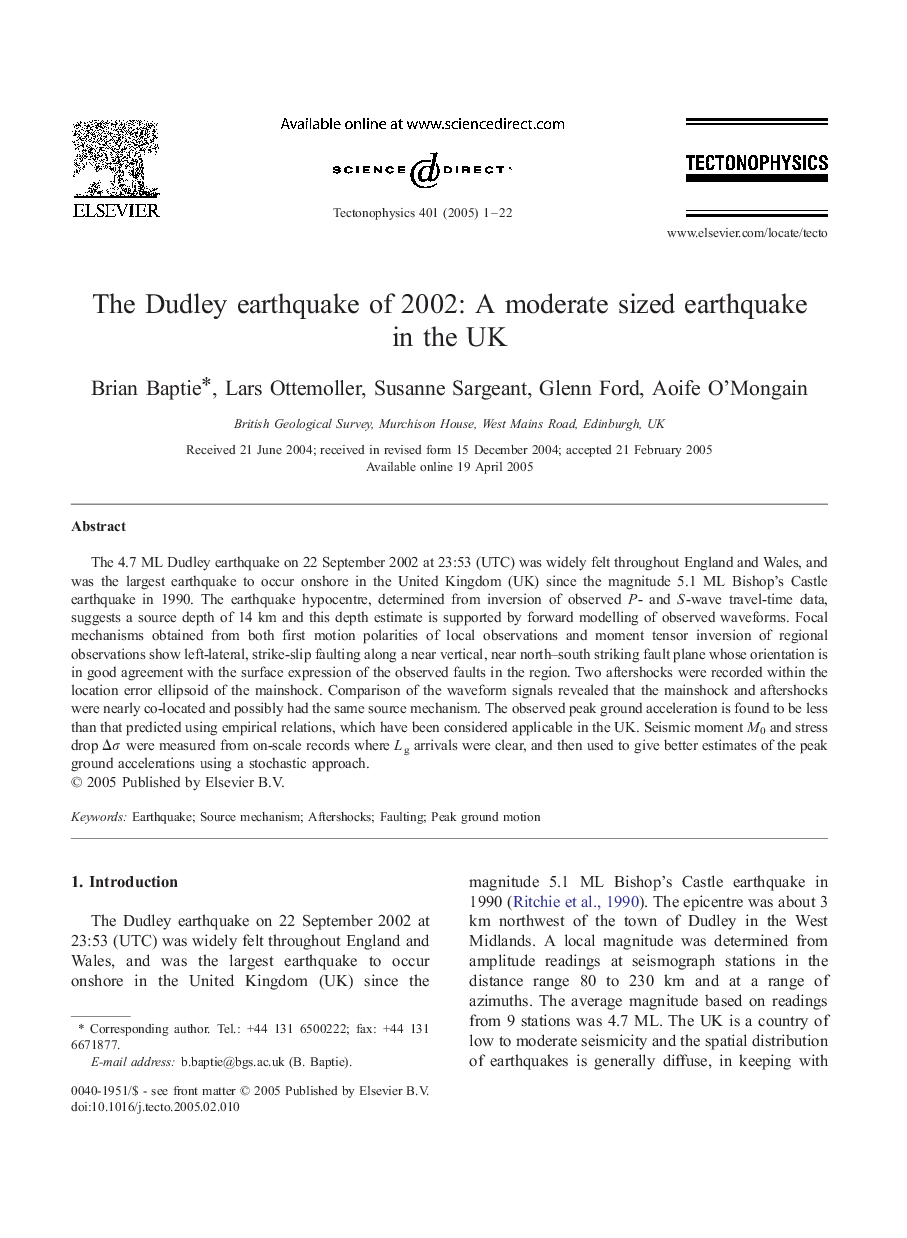| Article ID | Journal | Published Year | Pages | File Type |
|---|---|---|---|---|
| 9527182 | Tectonophysics | 2005 | 22 Pages |
Abstract
The 4.7 ML Dudley earthquake on 22 September 2002 at 23:53 (UTC) was widely felt throughout England and Wales, and was the largest earthquake to occur onshore in the United Kingdom (UK) since the magnitude 5.1 ML Bishop's Castle earthquake in 1990. The earthquake hypocentre, determined from inversion of observed P- and S-wave travel-time data, suggests a source depth of 14 km and this depth estimate is supported by forward modelling of observed waveforms. Focal mechanisms obtained from both first motion polarities of local observations and moment tensor inversion of regional observations show left-lateral, strike-slip faulting along a near vertical, near north-south striking fault plane whose orientation is in good agreement with the surface expression of the observed faults in the region. Two aftershocks were recorded within the location error ellipsoid of the mainshock. Comparison of the waveform signals revealed that the mainshock and aftershocks were nearly co-located and possibly had the same source mechanism. The observed peak ground acceleration is found to be less than that predicted using empirical relations, which have been considered applicable in the UK. Seismic moment M0 and stress drop ÎÏ were measured from on-scale records where Lg arrivals were clear, and then used to give better estimates of the peak ground accelerations using a stochastic approach.
Related Topics
Physical Sciences and Engineering
Earth and Planetary Sciences
Earth-Surface Processes
Authors
Brian Baptie, Lars Ottemoller, Susanne Sargeant, Glenn Ford, Aoife O'Mongain,
